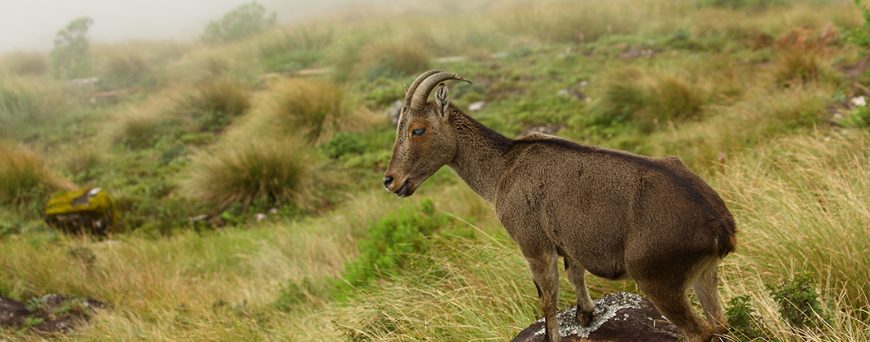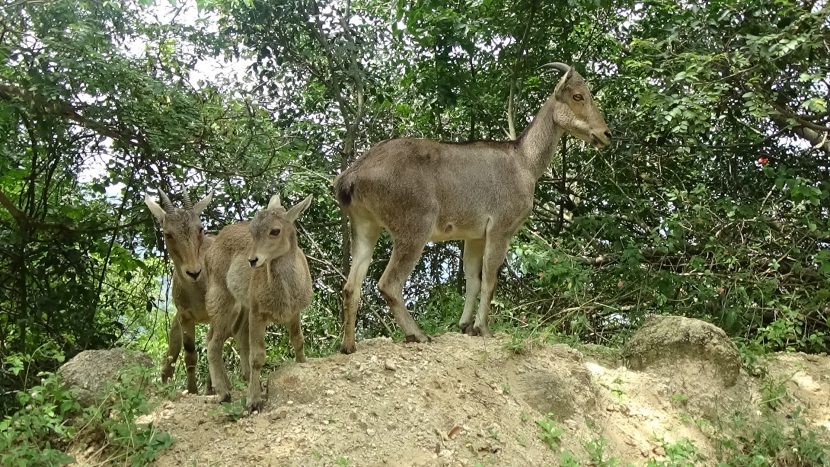
Nilgiri Tahr in Eravikulam National Park – Know about Mountain Goat of Kerala
The Nilgiri Tahr is identified in the vicinity as the Nilgiri ibex or simply ibex, in the Nilgiri Hills and the southern portion of the Western Ghats in Kerala and Tamil Nadu. It is an ungulate and the state animal of Tamil Nadu. Notwithstanding its native name, it is more diligently associated to the sheep of the Ovis genus than the ibex and wild goats of the Capra genus.

Know About Nilgiri Tahr:
Nilgiri Tahr is a sturdy goat with short, bristly fur and thick curls. They are excellent mountain climbers. Both genders have bowed horns, reaching up to 40 cm for males and 30 cm for females.
Unlock Best Deal on Kerala Tour Package NowThere were around 100 Nilgiri tahrs left in the world by the initial 20th century. Ever since that time their numbers have improved slightly; in a wide-ranging study of the Nilgiri Tahr populace in Western Ghats, the WWF-India has put the inhabitants at 3,122. Their range spreads over 400 kms from north to south, and Eravikulam National Park is home to the biggest population of Nilgiritragus hylocrius. This national park is declared as a World Heritage site by UNESCO.
Calving is a birth procedure that upshots in offspring. The element of both mommy and baby can be warmly mammalian or it can be cold as ice. A calving untying parent from child can be elongated and prolonged or sudden and devastating. This is the process by which the population of Nilgiri Tahr also increases with every season.
Eravikulam National Park is one of its type in Kerala, where the vanishing Nilgiri Thar is sheltered. Spread over 97 sq. kms, this park grips the leading sustainable population of Tahr, a number of other species of uncommon animals, birdies and butterflies.
Unlock Best Deal on Kerala Tour Package NowEravikulam National Park, Munnar would be closed for visitors from 1st February 2017 to 1st April 2017 owing to the calving season of Nilgiri Tahr. The breeding season of the Tahrs is amid June and August and the maturation period is approximately six months. Females produce to a single calf, however sporadically a mother with two offspring has been witnessed. Births peak in February, and the offspring are impulsively cautious of human presence. Experts are of the view that the freshly born calves are very susceptible to turbulences and diseases. The offspring follow their mothers for the first 2 months and were deterred in 6 months. According to them, the calves go along with their mothers to the Rajamala Tourism region.
An approximation taken in 2010 presented the population as 776; and 2011 it was 831, whereas in 2012 it decreases to 789. The number of offspring throughout the calving season was projected to be 70. Wild dogs, leopards, and even tigers are the chief marauders of the Nilgiri Tahr. Sickness and misfortunes also claim some of them.
The grown-up males are known as saddlebacks as they cultivate a light grey area on their backs. The Nilgiri Tahrs are the only species of Caprine ungulates discovered in southern part of the Himalayas.
Unlock Best Deal on Kerala Tour Package NowTo get more information about best season to visit Eravikulam National Park in Kerala, kindly contact SreesTours – a leading tour and travel operator in Kumarakom to make your perfect trip.
Image Courtesy: Wiki, Nilgiri tahr
